 |
 |
 |
 |
 |
 |
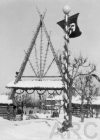 |
| Welcome |
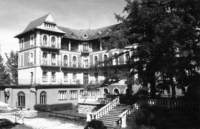 |
| Stamary Hotel |
 |
| Weissmann |
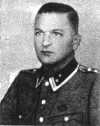 |
| Sehmisch |
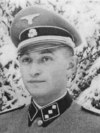 |
| Rosenbaum |
Rosenbaumís duties were more of a matronly nature, arranging board and lodging, salaries, welfare of conscripts and general administrative duties. Among other permanent staff were the brothers Wilhelm and Johann Mauer who had been seconded for duty at the school. The brothers, once officers in the Polish army and who spoke Ukrainian, were enlisted to train and instruct Ukrainian personnel. Their sister, Lisa Schumacher, undertook the office work. The kitchen and feeding arrangements were organised by local Polish personnel. The curriculum and training at the school underwent a number of changes according to the progress of the war. Selected members of the SS security services, Ukrainian and Polish collaborators were trained in intelligence and counterintelligence activities.
In Zakopane, the intermediary of the Jewish Council, coincidentally named Rosenbaum, appointed male and female workers from the Jewish population for maintenance and cleaning work. A Jew, Paul Beck, was appointed to liase with the SS as overseer of the Jewish workers. With his experience in practical things and a good portion of deceitfulness, Beck, who spoke a number of languages, knew how to conduct himself and mediate between the 'Jewish workers' and the German authorities. When, in July 1940, the school and its permanent staff moved from Zakopane to Rabka (called by the Germans "Bad Rabka"), a number of Jewish workers were selected by Wilhelm Rosenbaum (among them Beck) to move there.
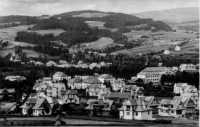 |
| Rabka |
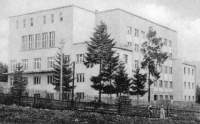 |
| Theresianeum |
The SD School initially occupied the premises of a requisitioned Jewish sanatorium for children (called "Frankel's summer camp for Jewish children"). Subsequently the school moved to new and much larger premises in the "Theresianeum", also called "Tereska", a high school for girls. The four-story building was located in the northern part of the town called Slonne, on a tree-covered slope alongside the Slonna River which flowed into the Raba River. Rosenbaum lived with his girlfriend Ann-Marie Bachus in a villa which belonged to a rich Pole. The house had been confiscated for their love nest...
SS-Hauptsturmführer Hans Krüger arrived with his entourage at the newly converted school and remained there until the autumn of 1940, when he was recalled to Krakow to take up the duties of deputy to the BdS, Dr Eberhard Schoengarth. For a short period, SS- Hauptsturmführer Rudolf Voigtländer took over, but within a few weeks Rosenbaum was appointed commandant of the school, where he remained until April 1941, when he was also recalled to Schoengarthís office for work preparatory to the implementation of "Barbarossa". The school activities were suspended but a small staff was retained to maintain the premises. The Sipo-SD School did not recommence activities until November 1941, when both Rosenbaum and Schoengarth had returned from military duties in East Galicia.
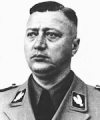 |
| Schoengarth |
Rosenbaum had no authority or influence in the educational training at the school. As Wirtschaftsbeamter (clerk), his duties were the same as in Zakopane: to arrange accommodation for students attending courses. As a measure of Schoengarthís opinion of him, Rosenbaum was titled "Headmaster" but despite this unflattering title, as commandant of the school, he wielded enormous power. Rosenbaum remained as administrator of the school until the spring of 1943, when the activities of the school were the subject of SS internal criminal and corruption investigations and he was removed for other duties. It was during the period autumn 1941 - spring 1943 that the crimes for which he was indicted after the war were committed.
Selected candidates for the school were recruited from a number of sources, but mainly from the Security Services, Polish Police officers, Ukrainian security collaborators, including Ukrainian prisoners of war from the internment camps, and the more established training camp of Trawniki, near Lublin. Ukrainian candidates were required to be healthy men between the ages of eighteen and thirty-five who were ranked and segregated according to their standard of education.
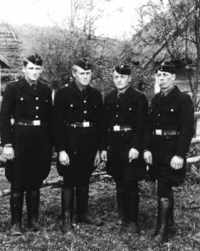 |
| Ukrainian SS in Rabka |
SS-Scharführer Bandura was the school driver and SS-Scharführer Dziuba was clerical officer. SS-Oberscharführer Hermann Oder joined the school in March 1942 (he was responsible for orderly rooms) and the SS-Hauptscharführer Walter Proch, and Pohland joined the small team in July 1942, and acted as deputies to Rosenbaum. Proch became commander of the Ukrainian detachment. SS-Scharführer Otto Schroff was administrator of school premises. The female contracted staff (and later witnesses) were Meta Kück, Schindler, and Engelmann, who was secretary to Rosenbaum.
In addition to the basic recruits, Sipo-SD officers for the senior command structure were sent to the school for pre-promotion and refresher courses. These courses for potential SS leaders were of between three and six months duration, and were geared to those officers who would return in the short term to the occupied zones. Lecturers at the school came from the elite of the Nazi hierarchy: Dr Hans Frank, Odilo Globocnik, and Hermann Höfle from the Aktion Reinhard headquarters in Lublin, F. W. Krüger, Scherner, Müller, and Grosskopf from the security services in Krakow. Visiting lecturers Katzmann, Tanzmann, and Hans Krüger from eastern Galicia also contributed.
Shortly after Rosenbaumís return to the school, he arranged and constructed new buildings and appointed auxiliary staff. By December 1941, the first inductees were entering the school. Rosenbaum had installed a variety of workshops on the school premises: a tailorís shop, shoemakers, saddlers, and a hairdresserís shop, all administered by a Jew, Borger and his son, under the direct supervision of Ukrainian supervisors.
Based on the employment of the Jews, Rosenbaum erected more buildings in the school grounds. He also laid out a sports ground and shooting range in the small woods behind the school. Building materials for this construction work mostly came from Jewish cemeteries in the district. From the Jewish cemetery of Nowy Targ, the smooth granite and marble stones were shipped to the Rabka School and used in the construction of the shooting range and the paved area at the front of the school.
From December 1941, there had been a steady stream of Polish, Ukrainian and German military conscripts passing through the training courses of the Rabka School. This was in addition to the senior and intermediate command courses that had just commenced. The length of the courses fluctuated, but usually they were of a month's duration for the non-commissioned personnel and between 3 and 6 months for the senior commanders. During the "Barbarossa Campaign" emergency courses were the practice, but once the initial phase of the destruction of the "Judobolsheviks" had been realised, the school settled down to a more conventional syllabus, and continued in this manner until 1944, when it was transferred to Berlin due to the Russian advance.
Already mentioned, were the visits to the school by senior officers to lecture on a number of subjects. Schoengarth would often chair these lectures and meetings. Dr Kurt Neiding, from the BdS in Krakow remembered one such lecture given by an SS-Führer from the Aktion Reinhard office of Globocnik:
"I once took part in a commanders meeting in Bad Rabka, which was chaired by Schoengarth. An SS-Führer, who was stationed in Lublin, brought a piece of soap with him. It was an experiment which, on the orders of Polizeiführer Globocnik, had been made out of Jewish corpses. There were obviously attempts being made to use the Jewish corpses to make soap."
Behind this façade, the building was to become the training area of the SS extermination section for German, Polish, and Ukrainian executioners and students of the intermediate Sipo- and SD command structure. The idea of executing Jews in the woods behind the SD School appealed to the Gestapo; for the students it was good practice. All forms of murder were used: shootings, hanging and beatings. It is estimated that over 30 roundups from neighbouring villages were held, and the victims brought to the school where they were executed in the school grounds. Pious Jews brought into the school were received with particular cruelty and made to run the gauntlet of the SS and Ukrainians who beat them mercilessly on their path to the pits that had been dug in the woods. Their scrolls were cut into shreds; they fell into the pit crying "Shema Yisrael!"
To cover up their murder, Rosenbaum ordered the Rabka town clerk, Czeslaw Trybowski, to register their deaths as "victims of heart attacks". Rosenbaum obtained more Jewish workers from the responsible employment office in Nowy Targ. Later on, from May 1942, based upon need, Jews from the neighbouring district of Nowy Sacz (Neu-Sandez) and the surrounding areas were transported to the school.
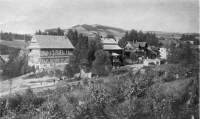 |
| Poniatowskiego Street and Hillocks |
 |
Rosenbaum urged on the frightened people: "Shovel, shovel, fill the carts and run!" ... "Shovel, shovel, shovel you Jews, I will show you how to work!" ... "Go, go, on the double!" were his commands. If a worker drew attention to himself, for no apparent reason he would receive a lash with a whip covered by a metal piece at its end, which Rosenbaum always carried with him. The lash was given in such a way that the metal end of the whip would hit the victim from the back of the skull towards the face, in the proximity of the eyes. The area of the eye socket was swollen and turned blue. Rosenbaum also used other objects and even his bare fists to maltreat his workers at the slightest pretence. He used every possible opportunity to violate the dignity of the Jews. There was a catalogue of violence and abuse against his Jewish workers which would, however, pale into insignificance when placed along side the murderous regime that was about to overtake the Rabka School.
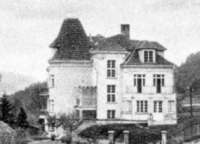 |
| Villa "Marysin" |
It was not only the students of National Socialism who underwent tuition. The Jews also had to endure courses of instruction but of a very different nature. An inmate, Michael Ettinger, stated:
"Selected Kapos of the Jewish prisoners were regularly ordered by Scharführer Bohnert to attend instruction classes, which were arranged early in the morning. We were taken to the fields behind the school where we were given instructions on how to conduct ourselves when called upon to dig pits. We were not stupid and knew that people were being shot in the woods. At first they told us that the pits were for anti-aircraft purposes, but this lie had no meaning for us. After a time, even the Germans knew these lies were not practical. The pit had to be dug to precise measurements, which would be given to us at the time. On the arrival of the commandant we had to make ourselves scarce and hide in the bushes with our backs to the pit. At the sound of a whistle we would return to the pit and work to instructions, which meant arranging the dead bodies, and then filling in the pits until they were level.
Of course, some of us looked at what was going on: groups of people were brought to the edge of the pit and made to undress. Then they were positioned at the edge and shot in the back of the head. The shouts, pleas and screams were terrible."
Rosenbaum gave the orders for all executions and was present at all of the ascertained actions mentioned below. These actions, of both mass and individual shootings, were carried out according to a specific plan based upon trained shooting practices in the Generalgouvernment. Rosenbaum was a trained killer, having been indoctrinated as to methods at the "shooting seminar" given by Schoengarth in Lwow.
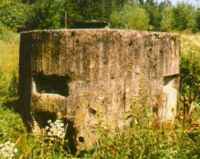 |
| 2 Bunkers protected the School |
At this time in the proceedings, Rosenbaum would appear with other SS officers and Ukrainians. Sometimes terrible scenes took place. The victims screamed in fear of death and begged for their lives. Mothers were imploring the commandant to shoot them first before shooting their children. Women refused to undress and their clothes were ripped off by force. Then the chosen Jews had to stand at the edge of the graves or sit around the graveside. A single shot in the nape of the neck killed them. The bodies fell into the grave, or following the shot were kicked into the pit by their executioner.
The grave was a horrifying sight. The bodies were lying in total disorder, one on top of another and covered in blood. The Jews who had dug the pits were called, usually with the blow of a whistle, and were sent into the graves to arrange the bodies. Often they would notice that some of the Jews had been shot but were not dead. Rosenbaum or other executioners would fire additional shots to finish off these victims. After the shootings the bodies were covered with chalk and then with earth. The execution site was then grassed over. The clothes of the victims were collected by the Jews, taken to the school and cleaned, repaired and used.
Rosenbaum tortured his Jewish workers mentally and to hurt their religious feelings. He took Jewish gravestones from neighbouring Jewish cemeteries and used them to build a large staircase in front of the school building. When Orthodox Jews arrived at the school, the SD and Ukrainians organised games. The Jews were driven back and forth in wheelbarrows; the elder Jews had to sit in the wheelbarrows and the younger Jews had to push them through dirt and water pools until the wheelbarrows turned over. The Torah Scrolls were taken from the religious Jews and destroyed. Dogs were let loose on the Jews to frighten them for the entertainment of their tormentors who were simultaneously beating them with sticks. Rosenbaum participated by whipping the Jews and screaming to these anguished people: "Where is your God now, you damned Jews?" Whenever he saw Jews whistling in the school he would yell: "Only we are allowed to whistle and sing, as we are fighting and winning." Rosenbaum appeared frequently at the Jewish tailors with a blood stained uniform: "Clean this swine blood", he would say. Turning to the Ukrainian guard Radke, he said, referring the tailor Gold: "He is a good tailor but he will be shot anyway."
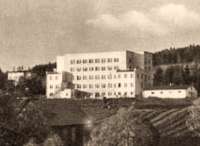 |
| The School in 1950 |
"The common graves dug for the victims in the woods at the Rabka School contained seven times as many corpses as there were Jewish inhabitants in Rabka before the war."
5 days prior to the deportation of the Jews of Rabka to Belzec, on 30 August 1942, several members of the Jewish staff at the school attempted to escape. As a reprisal, and in order to discourage further escape attempts, Rosenbaum arranged for the hanging of 10 prisoners, including young Edek Liebenheimer who was Rosenbaumís "boot boy". Liebenheimerís noose ripped or he slid through the noose of the rope and he fell on the ground. Liebenheimer tried to escape; when the guards were about to shoot him, Rosenbaum yelled in wild excitement: "Do not shoot, hang again!" Liebenheimer begged him: "Mr Untersturmführer, please shoot me!" Rosenbaum yelled at him: "You dog, for you I am not an Untersturmführer anymore, you will be hanged!" He was hanged a second time. The noose ripped once more and he again fell to the ground. The third attempt was successful. Another witness, Dr Dawid Jakubowicz:
"Untersturmführer Wilhelm Rosenbaum was the worst of all the Gestapo-men in the Rabka district. The others tried to hide their barbaric acts by committing them some distance outside the town. Rosenbaum and Heinrich Hamann, head of the Gestapo in Nowy Targ, committed the atrocities in broad daylight for all to see."
On 30 August 1942, recruits from the Rabka Sipo-School, assisted by the SS from Nowy Targ, carried out a brutal action in the town of Jordanow. The Jews of Jordanow were rounded up and taken to the town square where they were assembled for selection. For a reason unknown at that time, mothers and small children were separated from those assembled and marched off separately. Rosenbaum, who had taken personal charge of this "action", had sent a team under the supervision of SS-Oberscharführer Proch to prepare the pits in the Jordanow cemetery. Apart from the mothers and children, every Jew in Jordanow was shot into the pits using the "plank and walk" technique perfected by Proch. Many were not killed outright but no mercy shot was given. The pit was filled in, burying many half dead Jews. Reports that the ground was heaving were not exaggerated. The Ukrainians and Poles who were guarding the gravesite had to stamp the ground to even out the moving earth.
Late in the afternoon, directly after the slaughter, horse-drawn wagons arrived in Rabka fully laden with young mothers and very small children (babies and 3-4 year olds). The local Jewish community did not know about the massacre at Jordanow and were perplexed at the arrival of these wagons and their distressed cargo. The SS had killed every Jew in Jordanow, with the exception of these young mothers and children. The mothers from Jordanow were in shock after seeing their families shot at the cemetery. On Rosenbaumís orders, the mothers were taken to the Judenrat who were ordered to house and feed them. The Jewish community could not understand why the SS had spared the women and children. A few weeks later, all became clear. The women and children were rounded up and taken into the school. They were imprisoned in the stables and bunkers where previous prisoners had been held. There had been a recent intake of about 100 Ukrainian, Polish and SD conscript personnel. The mothers and children were taken in small batches of 3 and 4 at a time and used as examples by the SS staff at the school to show the new recruits the best way to murder when engaged on ghetto clearing duties and other actions.
There is little doubt that there was an overall strategy in dealing with the "Jewish Question" in the Generalgouvernement and the occupied territories after the launching of Barbarossa. In all the ghettos and camps, the policy of deception, connivance and brutality were identical. The smallest village to the largest ghetto followed the "blueprints of instruction" from the Rabka School.
One of the most curious aspects of the Rabka School murders was the secrecy Rosenbaum was able to maintain. When he gave evidence at his trial in Hamburg, he agreed that he had done his utmost to conceal the murders from domestic staff at the school. That is why most executions were committed in the evening, when all the general office and domestic staff had finished work and gone home. To an extent he was successful. While the witnesses Meta Kück, Käthe Engelmann and Adele Schmitt (non Jews), all employed in the offices of the school in 1942, were quite ignorant concerning the atrocities, the witness Elfriede Bohnert, the wife of SS-Scharführer Bohnert, noticed the execution places during her walks in the woods. Mrs Bohnert had overheard the kitchen staff discussing that Jews were being killed in the woods. However, she considered questions about this were inappropriate. The Jewess, Lucja (Lusia) Schön, a valuable witness because of her special relationship with Rosenbaum and the senior SS staff, mentioned that the SS wives climbed onto the roof to view the killings when they were taking place in the woods.
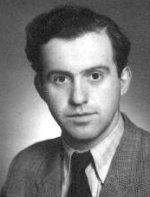 |
| Arthur Kuhnreich |
"The feared end came on a sunny Sunday, 1 September 1942. Wilhelm Rosenbaum and his cohorts assembled all Jews from Rabka at our camp. He also removed from the camp anyone with red hair, which he especially hated, those who wore glasses, and, in general, anyone who did not pass his scrutiny. They were all herded of on a freight train to their final destination, Belzec ... I was one of 100 men left in the Rabka camp for the time being. The atmosphere among us was that of hopelessness. We knew that the past had been destroyed forever and we did not see any future. Even the Gestapo looked depressed, for there were no more Jews to be killed. Here and there, some were dragged out of hiding, from bunkers, but very few in comparison to the past, and that made the SS unhappy. Also, they did not relish the idea of going to fight at the front (...) In the middle of February 1943, the camp was ordered to be divided in half.
Fifty workers were sent to the Plaszow concentration camp... In June 1943 the last 50 workers came from the Rabka camp to Plaszow. Commandant Goeth made his selection: Most of the people ended up on the hill (Chujowa Gorka), shot to death."
From Plaszow Kuhnreich was taken to Auschwitz:
"We were to undress and the infamous Dr Mengele looked each of us over. He noticed the scars on the left side of my back. They were welt marks from leather whips with which guards used to beat us at the Rabka camp. I could not say that, of course! He asked if I always had them. 'Yes, from birth', I said.Ē
In April 1943 Rosenbaum was moved sideways from the Sipo- und SD Führer of the Sipo- and SD School Rabka, to (BdS) Führer of Sipo-SD in Krakow. In August 1943, Rosenbaum married his then current woman friend from Rabka and shortly afterwards he was transferred to Salzburg. On 2 January 1945, he returned to Rabka to his former place of activity, as a participant in a chief of staff course. On 3 February 1945, this course had to be aborted due to the advance of the approaching front line. On 20 April 1945, he was promoted to SS-Untersturmführer.
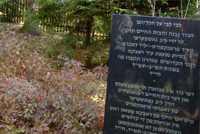 |
| Memorial Stone |
In 1949, he settled on taking a sweet shop in Hamburg, and then moved into wholesale confectionery where he was very successful. The Rosenbaum business had a total annual turnover of approximately 1.3 million DM. His marriage was childless, but the adoption a nephew of his wife occurred. In 1951, he travelled to Holland to seek out Pieter Menten who owed him a share of the property looted from Galicia in the "Good Old Days". Menten persuaded him to sit tight, as he would eventually get his share, but at the same time also persuaded Rosenbaum, on a 50-50 shared basis, to support a private prosecution for damages that Menten was bringing against the West German Government. Menten at that time was a free man, as his war crimes in the Stryj Valley and Lwow had not come to public notice.
Menten was suing the government for his arrest and detention by the SS prior to his expulsion from Krakow to the Netherlands in 1943. Menten won his case and received over $200.000 for his trouble. It is not known if Rosenbaum ever received a cent. He was arrested for War Crimes on 7 September 1961. His trial dragged on until 1968, when he received sixteen life sentences for the terrible crimes he had committed. He was released after a few years because of chronic rheumatic disease.
If you like to see more photos of the school premises, please visit the TPF Krakow website.
Trials:
Freiburg/Breisgau 1965:
Sehmisch, Richard Arno - 4Ĺ years
Weissmann, Robert Philipp - 7 years
(Polizei Sipo Zakopane, Polizei Sipo Szczawnica)
Crimes committed in: Jordanow, Kroscienko, Nowy Targ, Szczawnica, Zakopane during 1942-43:
Deportation and mass and individual shootings of Jewish men, women and children during the course of several "resettlement operations" in the district area of Nowy Targ. Mass shootings of Jewish forced laborers and prison inmates at the Jewish cemetery of Nowy Targ. Shootings because of violations against the decree on residential restrictions for Jews in the Generalgouvernement.
Bochum, 1966:
Baunack, Bruno - life sentence + 3 years
Böh., Hans - 3Ĺ years
Bornholt, Johann Claudius - life sentence + 12 years
Bro., Egbert - 5 years
Den., Paul - 4Ĺ years
Dom., Max - 5 years
Gre., Karl - 3 years 2 months
Hamann, Heinrich - life sentence + 10 years
Lab., Günter - 10 years
Lin., Josef - 3 years 2 months
Rei., Walter - 3 years 2 months
Rouenhoff, Josef - life sentence + 15 Years
Sie., Heinrich - 6 years
Wel., Emil - 3Ĺ years
Polizei (Grenzpolizei Neu-Sandez)
Crimes committed in: Neu-Sandez, Alt-Sandez, Biegonice, Grybow, Krynica, Limanowa, Marcinkowice, Mszana-Dolna, Muszyna, Nawojowa, Przemysl, Raba Nizna, Tymbark during 1940-45
Mass-, group-, and single shootings of Jews who lived within reach of the Sipo branch office at Neu-Sandez (Nowy Sacz). Transfer of single Jews to concentration camps. Deportation of at least 15,000 Jews to KL Belzec at the time of the liquidation of the Neu-Sandez (Nowy Sacz) ghetto in August 1942.
Bochum, 1967-71:
Bar., Hans Wilhelm - 3 years
Polizei (SSPF Krakau)
Crimes committed in: Neu-Sandez (Nowy Sacz) in August 1942 - Mitwirkung als Adjutant des SSPF Krakau - an der Deportation von mindestens 15.000 Juden aus Nowy Sacz ins KL Belzec.
Hamburg, 1968:
Rosenbaum, Wilhelm Karl Johannes - life sentence
Polizei (SD Bad Rabka / SD-Schule)
Crimes committed in Bad Rabka, in May 1942:
Mass- and single killings by shooting and hanging of Jewish forced laborerers and of Jews, who had escaped from deportation as well as of a Jewish family, which carried the same name as the defendant.
Sources:
Abridged from an original manuscript by Robin O'Neil. For the complete text see:
www.jewishgen.org/yizkor/Galicia2/gal001.html
Kuhnreich, Arthur. Holocaust Memories, 1939-1945, edited by Mrs Genia Kuhnreich
www.vineland.org
Remembrance Book of Nowy Targ and Vicinity (Translation of Sefer Nowy Targ ve ha seviva), by Yizkor Book Project - JewishGen
www.jewishgen.org/yizkor/nowy targ.html
© ARC 2005